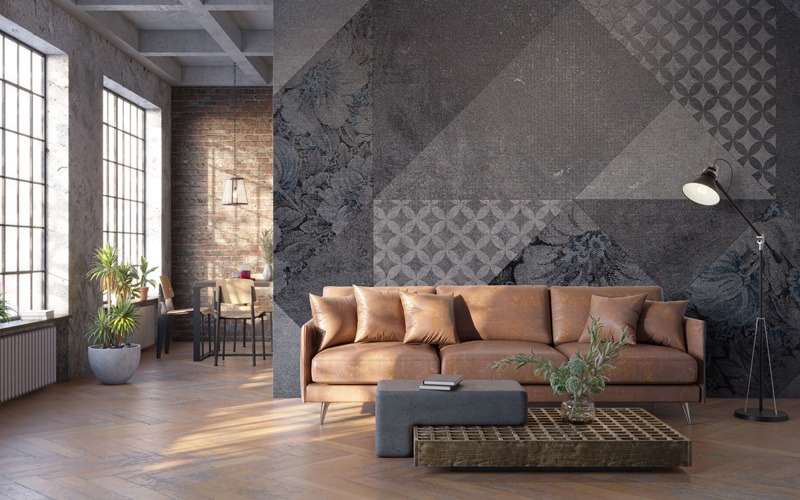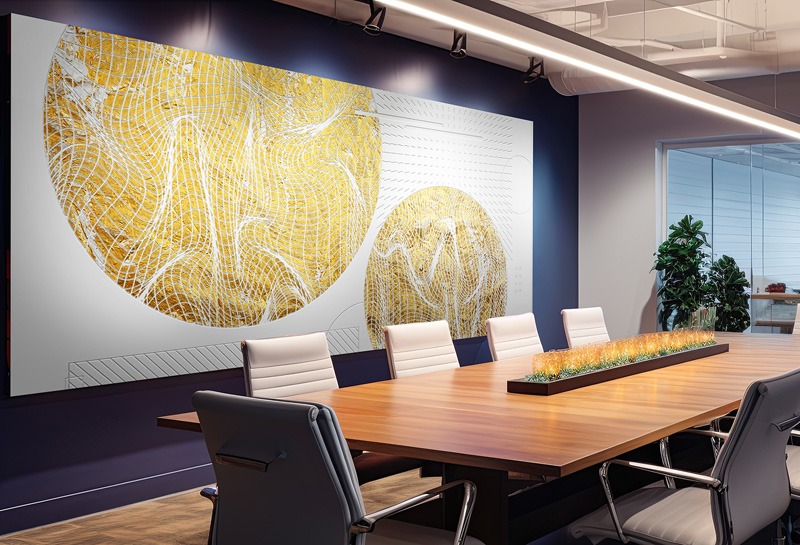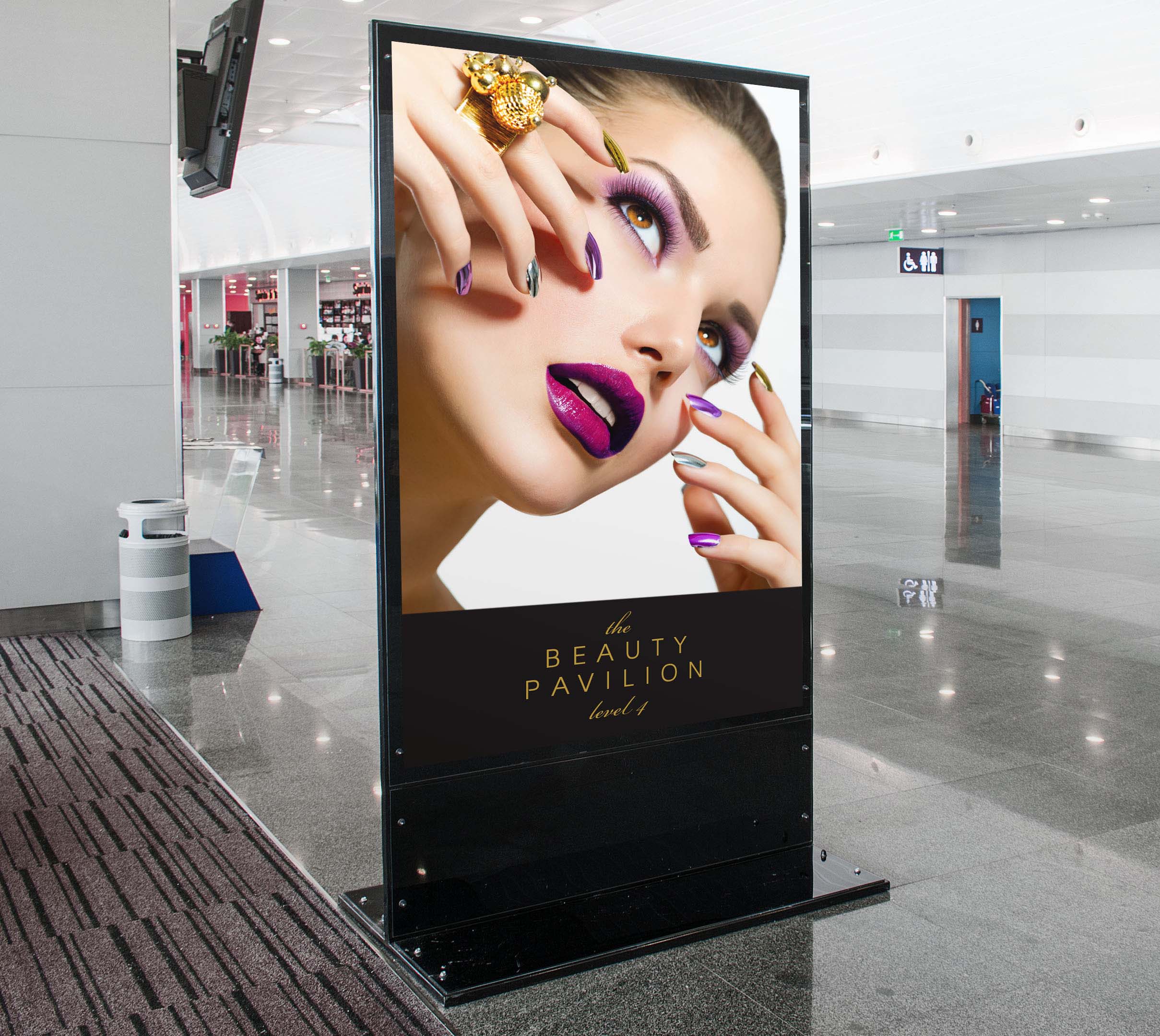Texture made easy: Adding depth, dimension, distinction

Adding texture to digitally printed products is a growing trend, and for good reason. In addition to contributing to brand differentiation and storytelling, texture adds perceived value to prints, conveying a sense of quality, craftsmanship, and luxury.
Advances in printing technology, both hardware and software, have made it easier and more cost-effective to create precise and intricate textures. These advances facilitate texture design and production, and enable features like raised or embossed effects in a single pass.
To better understand this important component of digital printing and the technology that enables it, we sat down with Roland DGA’s business development segment manager, DIMENSE and Décor, Kitt Jones.
Ginny Mumm (GM): What are some popular applications for textured or dimensional surface print?
Kitt Jones (KJ): Textured and dimensional surface printing, whether produced with ultraviolet (UV) printing technology or DIMENSE dimensional surface printers, opens the door to a wide range of creative and high-value applications.
- In wall coverings and murals, it enables custom wallpaper with raised textures, patterns, or sculpted finishes, perfect for feature walls in hotels, restaurants, and luxury homes.
- Fine art and canvas prints can be elevated with gallery-quality reproductions that mimic dimensional brushstrokes or offer texture-only applications for a hand-painted look.
- In signage and retail displays, tactile elements enhance point of purchase (POP) and point of sale (POS) installations, while raised lettering or Braille supports indoor wayfinding.
- For trade show booths and event graphics, textured panels, backdrops, and dimensional logos create immersive brand experiences that stand out under lighting.
- Architectural and interior design elements, such as custom ceiling panels, room dividers, and sculpted wall tiles, bring depth to high-end hospitality and corporate spaces.
- It is also applied to décor products, including lamp shades, vases, furniture inlays, and custom accessories.
GM: Why are companies opting to bring dimensional surface printing in-house?
KJ: Companies are increasingly choosing to add dimensional surface printers because having this capability in-house provides greater creative control, faster turnaround times, and a stronger competitive edge. By owning the equipment, they can design, prototype, and produce textured or sculpted prints on demand, eliminating reliance on outside vendors and reducing production delays. In-house capabilities also improve profitability by reducing outsourcing costs, protecting margins, and capturing more of the project’s value.
Ultimately, bringing dimensional printing in-house transforms companies from passive buyers into creative producers, setting them apart in crowded markets.
GM: What types of texture can you produce with DIMENSE technology?
KJ: With DIMENSE technology, it’s possible to produce a wide variety of textures and sculpted effects in a single, seamless printing process. By controlling the structure of the media surface, DIMENSE allows for both subtle and dramatic tactile finishes that transform the look and feel of any design into stunning surface designs.
The texture is up to the designer and allows for complete custom ability; however, some popular effects include:
- Embossed patterns, such as geometric shapes, waves, and floral motifs, are perfect for wallpaper, murals, and décor.
- Fine art brushstrokes that replicate the look and feel of oil or acrylic paintings for gallery-quality reproductions.
- Realistic woodgrain and natural surfaces that mimic materials like stone, leather, or woven fabrics.
The technology also excels at tactile branding and logos, with raised lettering, symbols, and intricate marks for signage, packaging, and displays.

For a more artistic approach, DIMENSE can also produce texture-only surfaces without colour, allowing for custom painting. Uniquely, it can integrate vibrant full-colour printing with dimensional texture in one pass or create standalone textures for complete creative freedom.
GM: What type of ink is used in dimensional surface printing?
KJ: The DIMENSE DA-640 dimensional surface printer uses eco-friendly, water-based inks for the colour layer, paired with a proprietary sculpting media that reacts to heat during printing. Unlike traditional UV raised printing, which builds up layers of high-viscosity UV-curable ink to create texture, DIMENSE controls the surface structure of the media itself, producing deep reliefs, or subtle textures with printed colour applied over or around them.
In contrast, UV dimensional printing relies on specialized UV-curable inks that are jetted in multiple passes and instantly cured with UV light to form rigid, raised surfaces. This method delivers sharp, defined textures such as Braille, embossed lettering, and realistic material simulations like wood, stone, or leather. Both approaches offer unique creative possibilities.
GM: What media can you use with the DA-640 dimensional surface printer?
KJ: Both the technology and the dimensional surface printer were designed to work with a wide range of media, which enables stunning raised textures and comes in various finishes such as matte, gloss, pearl, chameleon, and gold or silver metallic for unique visual effects. This polyvinyl chloride (PVC)-free media reacts to heat during printing, allowing the surface structure to create raised designs. The DA-640 is also compatible with many third-party standard print materials, making it versatile for textured and flat printing applications.
GM: How different is the DA-640’s workflow from other types of printers, like eco-solvent, UV, or latex?
KJ: The workflow differs from eco-solvent, UV, and latex printers because it combines colour printing and texture creation in a single, continuous process using proprietary sculpting media. With eco-solvent and latex printers, output is typically limited to flat, full-colour prints—any texture must be added later through separate finishing steps like embossing, layering, or lamination. UV printers can create texture by building layers of UV-curable ink, but this requires multiple passes, longer print times, and careful height management.
In contrast, the DA-640 uses water-based latex inks for colour and heat to activate and shape the media surface, instantly producing smooth gradients, deep reliefs, or subtle patterns with no post-processing required. Adding to its efficiency, it integrates with DG Connect Designer, enabling a streamlined design-to-print workflow, and uses VersaWorks RIP software, known for its exceptional ease of use. Together, these tools make producing high-quality dimensional prints faster, more intuitive, and far more versatile than traditional print methods.

GM: What do you see ahead for this market?
KJ: Looking ahead, the market for dimensional surface printing is poised for significant growth, driven by both evolution and opportunity. For buyers, this technology offers a clear path to differentiation—adding unique value that sets print service providers (PSPs) apart from the competition. As businesses increasingly seek high-impact, tactile visuals for interiors, signage, packaging, and décor, it positions its owners at the forefront of this demand.
We see this market evolving rapidly with the introduction of new media types, expanded product applications, and growing market acceptance fueled by the unmistakable appeal of high-value, high-return on investment (ROI) prints. Early adopters will benefit most, leveraging the DA-640’s ability to merge stunning full-colour imagery with sculpted textures in one pass, enabling them to offer products that not only command premium pricing but also secure long-term client loyalty. In short, this is a technology that meets today’s needs and positions users well for the future. We believe it will help to evolve visual communication for years to come.
Ginny Mumm is a freelance consultant for digital inkjet printer/cutter provider Roland DGA. For more information, visit www.rolanddga.com.






